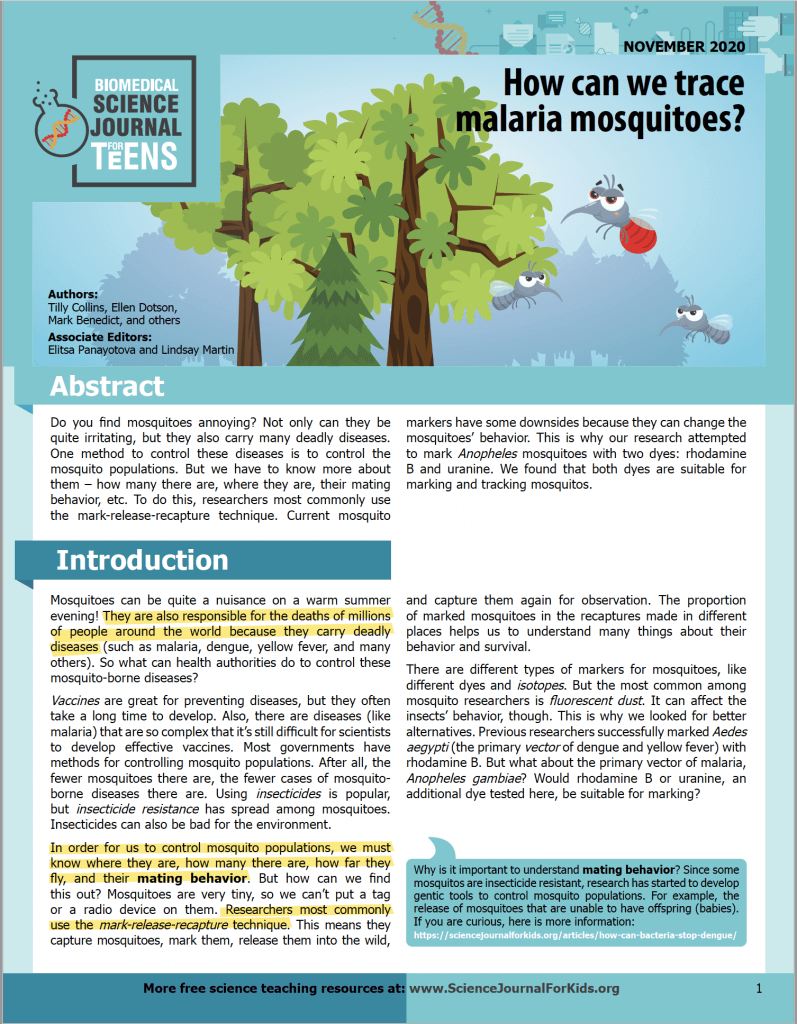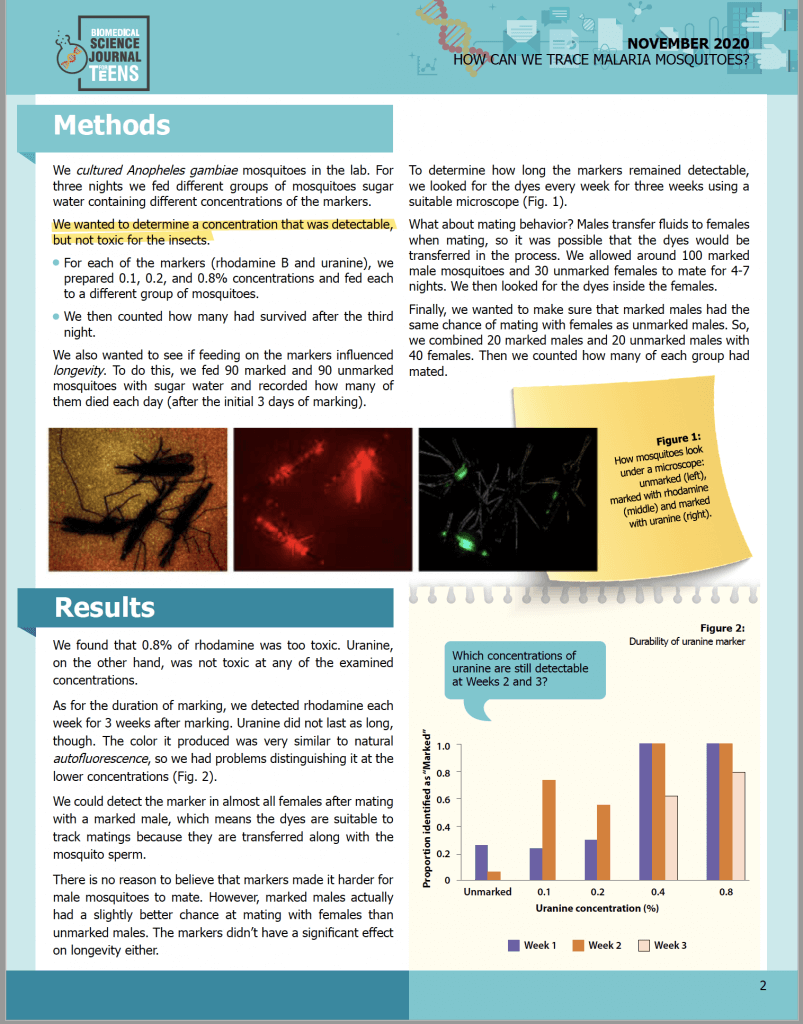Making Target Malaria’s science accessible to kids

Stakeholder engagement is one of Target Malaria’s three pillars. The project wants to make sure that local communities and other stakeholders understand the research we are conducting and the technology we are developing. Moreover, we want to address any information gap to enable stakeholders to make informed decisions, contribute to our research and participate in the public debate.
As part of this effort, Tilly Collins, Ellen Dotson, myself and several others recently contributed our work to the Science Journal for Kids. This initiative aims to present science in a language accessible to our future leaders, offering hundreds of scientific articles explicitly re-written for children.
Our paper “Fluorescent markers rhodamine B and uranine for Anopheles gambiae adults and matings” became “How can we trace malaria mosquitoes?”.
The authors of the blog start off by explaining that mosquitoes can transmit several diseases, and one way to fight these diseases is to control mosquitoes’ population. To do that, you need to know where they are, how many there are, how far they fly, and their mating behaviour. After this background, we introduce the “mark-release-recapture technique” and the two dyes – rhodamine B and uranine.
The paper is an excellent opportunity to present what Target Malaria does and the importance of research and innovation to control deadly diseases like malaria. It’s not easy to develop vaccines and insecticides are not as effective as before to control mosquitoes. The authors also share malaria prevention messages, emphasising the need to remove standing water, use bednets, have window screens, and apply approved insecticides and repellents.
Personally, it is rewarding to think that Tilly, Ellen and myself might have awakened some kids’ interest in a career in science. Maybe one of the readers will eventually become part of our team – who knows!


